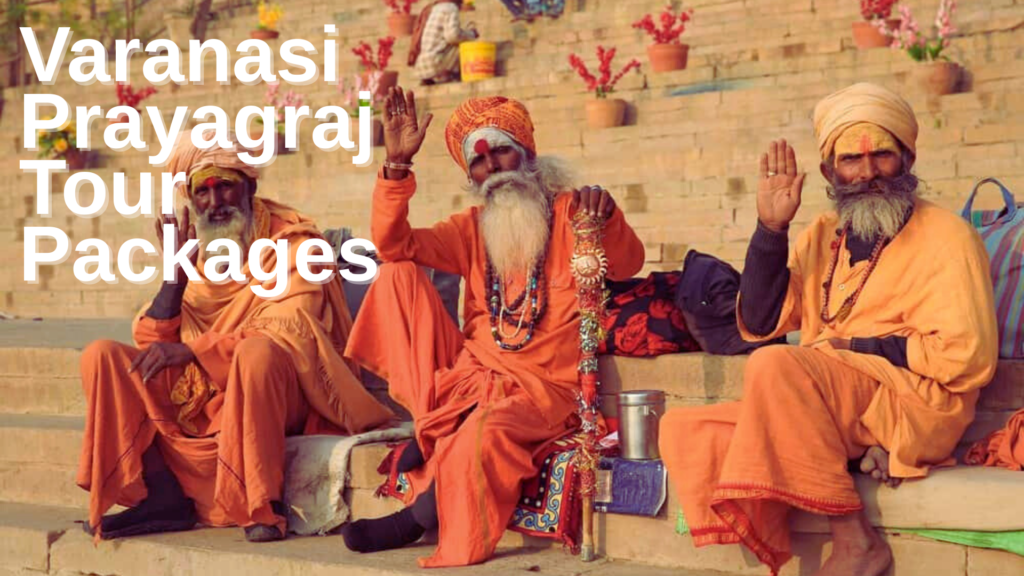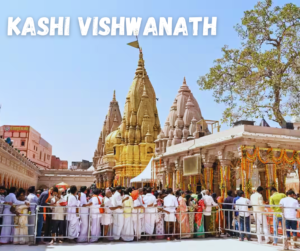What Are the Highlights of a Varanasi Prayagraj Tour?

The journey from Varanasi to Prayagraj (also known as Allahabad) brings travelers into the heart of India’s deeply spiritual heritage, blending vibrant temples, historical sites, and cultural experiences that define these ancient cities. Whether visiting for pilgrimage, cultural exploration, or sightseeing, a Varanasi Prayagraj tour offers memorable highlights. Here, we delve into the must-see destinations, spiritual sites, and unique experiences that make this tour unforgettable.
Overview of Varanasi and Prayagraj
Varanasi, one of the world’s oldest living cities, is a hub for spirituality and history along the banks of the sacred River Ganges. Known as Kashi or Benares, the city is synonymous with Hindu rituals and pilgrimage, making it a significant destination for religious and cultural tourism.
Prayagraj, historically called Allahabad, is revered for the Triveni Sangam, where the Ganges, Yamuna, and the mythical Saraswati rivers meet. Prayagraj is also famous for the Kumbh Mela, the world’s largest religious gathering, which draws millions of devotees for ritual bathing and ceremonies.
Top Highlights of Varanasi Prayagraj Tour
- Ganga Aarti at Dashashwamedh Ghat (Varanasi)
One of the most enchanting experiences on a Varanasi tour, the Ganga Aarti is a nightly ritual performed on the banks of the Ganges River at Dashashwamedh Ghat. This spectacular aarti ceremony features priests dressed in traditional attire, performing prayers and rituals with lit lamps, incense, and synchronized chanting. The Aarti symbolizes the reverence of the river, considered a lifeline for millions and a goddess by Hindu devotees.
Best Time to Attend: Evening, around sunset, when the Aarti commences and the ghats are illuminated with thousands of oil lamps.
- Kashi Vishwanath Temple (Varanasi)

Kashi Vishwanath Temple, dedicated to Lord Shiva, is one of the 12 Jyotirlingas and a must-visit highlight of Varanasi. The temple’s golden spire and intricate design make it a spiritual and architectural wonder. It’s one of the oldest and most revered temples in India, drawing pilgrims year-round who come to offer prayers and bathe in the Ganges to purify their souls.
Key Features: The main sanctum holds the revered Shiva Lingam, while the temple complex includes shrines for other deities, creating a deeply spiritual atmosphere.
- Assi Ghat and Boat Ride on the Ganges (Varanasi)
Assi Ghat, the southernmost ghat in Varanasi, is a place of calm and early-morning serenity, often favored by visitors for the morning Subah-e-Banaras ceremony. This includes classical music, yoga sessions, and an aarti, a perfect way to start the day in Varanasi. The boat ride on the Ganges is a breathtaking experience as it offers views of Varanasi’s ghats, temples, and life on the riverbank.
Tip: An early morning boat ride allows you to witness the sunrise and the locals performing daily rituals, creating a unique atmosphere.
- Ramnagar Fort (Varanasi)
Located on the eastern bank of the Ganges, Ramnagar Fort is an 18th-century sandstone structure known for its museum, which showcases weapons, costumes, vintage cars, and historical artifacts. The fort is also the residence of the former Maharaja of Varanasi and adds a historical touch to the spiritual essence of the tour.
Highlights: The museum’s rare collection includes vintage manuscripts, and the fort overlooks the Ganges, offering picturesque views.
- Triveni Sangam (Prayagraj)
The Triveni Sangam in Prayagraj, where the rivers Ganga, Yamuna, and Saraswati converge, is one of India’s holiest places. Taking a dip here is believed to cleanse one’s sins and purify the soul. The Kumbh Mela festival, held every 12 years, sees millions gathering at this point for ritual bathing.
Ideal Time to Visit: Early morning for a peaceful atmosphere and views of pilgrims engaging in ceremonies.

- Allahabad Fort (Prayagraj)
Built by the Mughal Emperor Akbar in the 16th century, Allahabad Fort is a massive structure that houses the famous Ashoka Pillar, an ancient Banyan tree known as Akshayavat, and the Saraswati Koop, believed to be the source of the Saraswati River. Although the fort is under the control of the Indian Army, parts of it are open to visitors during specific times, making it a unique blend of historical and religious significance.
Must-See: The Ashoka Pillar, with inscriptions in the ancient Brahmi script, is an important relic that offers a peek into India’s ancient history.
- Anand Bhavan and Swaraj Bhavan (Prayagraj)
Anand Bhavan, the ancestral home of the Nehru family, is now a museum dedicated to the Indian independence movement. It showcases memorabilia, books, and photographs from that era. Swaraj Bhavan, nearby, was the birthplace of former Prime Minister Indira Gandhi and also holds historical importance.
Notable Exhibit: The study room of Jawaharlal Nehru and artifacts related to the freedom struggle provide an insightful glimpse into India’s past.
- Alopi Devi Mandir (Prayagraj)
Located near the Sangam, Alopi Devi Mandir is a unique shrine, as the presiding deity is worshipped in the form of a wooden swing rather than an idol. This temple holds a special place in Hindu mythology and is considered one of the 51 Shakti Peethas.
Mythological Significance: Legend has it that the fingers of Goddess Sati fell at this site, making it sacred to devotees.
- Hanuman Mandir (Prayagraj)
The Hanuman Mandir in Prayagraj is famous for its unique reclining statue of Lord Hanuman, which measures nearly 20 feet. During the monsoon season, the statue is often submerged by the rising waters of the Ganges, which adds to the mystical aspect of the temple.
Interesting Fact: The temple is situated near the Sangam, attracting devotees who believe the idol’s immersion in Ganga waters is a blessing.
- Ashoka Pillar and Akshayavat (Prayagraj)
Located within Allahabad Fort, the Ashoka Pillar is a monolithic structure with inscriptions from the era of Emperor Ashoka, one of India’s most celebrated rulers. Akshayavat, the immortal banyan tree, is believed to be a wish-granting tree. These historical marvels reflect Prayagraj’s legacy and are essential stops for history enthusiasts.
Tip: Try to time your visit when public access is granted, as the fort is largely under military control.
Essential Tips for the Varanasi Prayagraj Tour
- Travel Duration: A typical Varanasi Prayagraj tour package can be completed within 3–5 days, allowing ample time for temple visits, sightseeing, and local experiences.
- Best Time to Visit: October to March, when the weather is cooler, is ideal for exploring these cities.
- Attire: Dress modestly, as these are pilgrimage sites. Comfortable clothing and footwear are recommended.
- Local Experiences: Don’t miss out on street food, local markets, and cultural activities to get a true sense of Varanasi’s and Prayagraj’s vibrant atmospheres.
Conclusion
Our Varanasi Prayagraj tour Package offers a spiritual and historical journey that’s unmatched in its depth of cultural and religious significance. From the mystical ghats of Varanasi to the sacred Sangam at Prayagraj, journey with Indian Temple Tour encapsulates India’s spiritual essence and history in one seamless experience.







